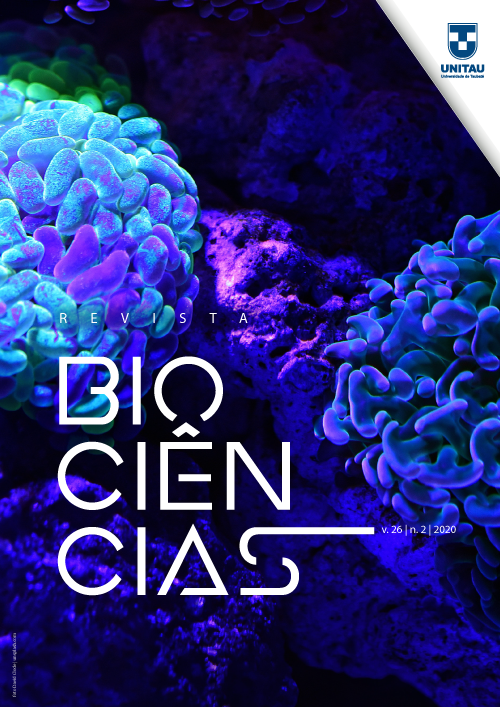Crescimento somático, longevidade e maturidade sexual morfológica do caranguejo marinho ornamental Mithraculus forceps em seu ambiente natural
Palavras-chave:
aquarium organisms, Mithracidae, spider crabResumo
The goal of this investigation was to determine the growth rates and longevity for the crab Mithraculus forceps in its natural environment on the southeastern Brazilian coast. Crabs were collected monthly from February 2004 through January 2006 in the rocky sublittoral of Vitória Island on the coast of São Paulo state. The crabs were sexed and measured for the greatest carapace width (CW). The growth curves for both sexes were obtained according to the von Bertalanffy model. A total of 1529 crabs were caught, including 712 males and 817 females. The growth curves of males and females were described by the equations CWt = 17.75 [1–e-0.0056(t-1.418)] and CWt = 13.64 [1–e-0.0064(t+0.017)], respectively. Comparison between male and female growth curves showed that a single curve cannot describe the growth pattern for this species. Longevity was estimated as 2.23 and 1.95 years for males and females, respectively. The size at which 50% of the population is estimated to be mature was 5.4 and 7.3 mm CW for males and females, respectively. The growth curves obtained for M. forceps are consistent with those of other Brachyura, in which males tend to grow more than females. Females must direct more energy to reproductive tasks, while males invest more energy into somatic growth and reach larger sizes than females. The larger size of males may confer an advantage when defending territories and competing for mates and facilitate securing the female during copulation.Downloads
Não há dados estatísticos.
Métricas
Carregando Métricas ...
Downloads
Publicado
2021-02-15
Como Citar
Barros-Alves, S. de P., Alves, D. F. R., Freire, F. A. M., & Cobo, V. J. (2021). Crescimento somático, longevidade e maturidade sexual morfológica do caranguejo marinho ornamental Mithraculus forceps em seu ambiente natural. Revista Biociências, 26(2), 13–26. Recuperado de https://periodicos.unitau.br/biociencias/article/view/3225
Edição
Seção
Ciências da Natureza






